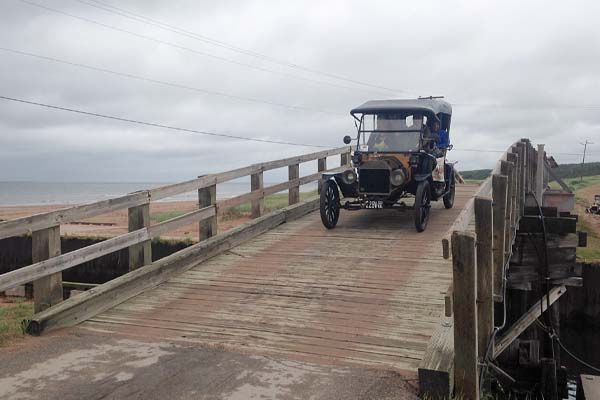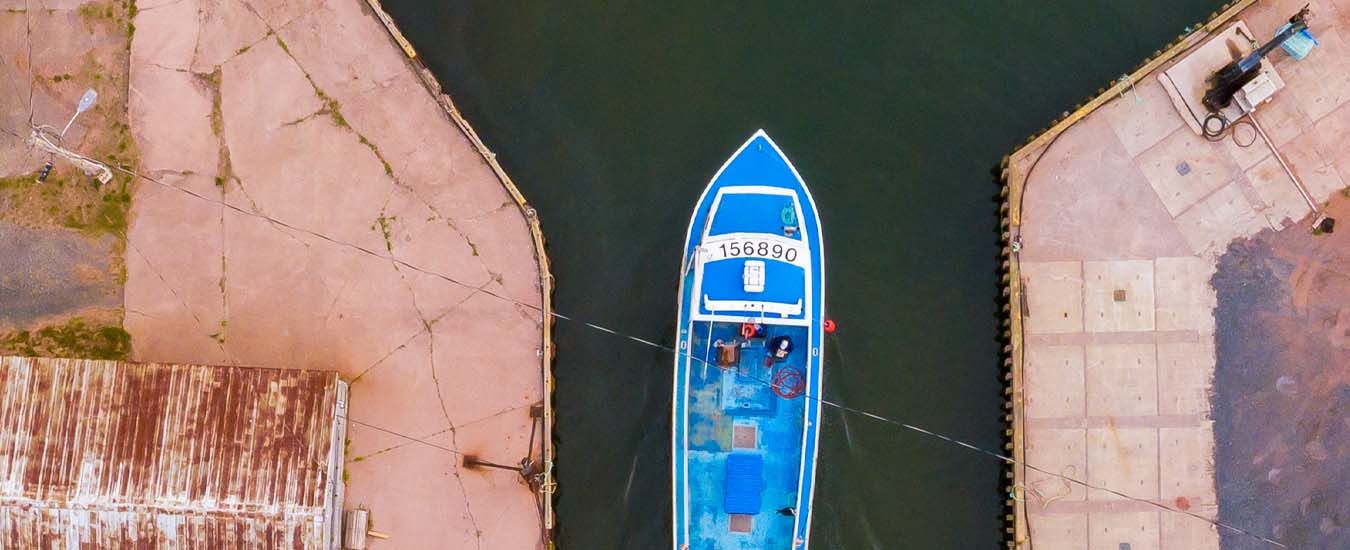A few storied structures from around the region
A bridge is a connection between two places, a symbol of union, and shared communication. Bridges are not unique to Atlantic Canada but many of ours are iconic.
While a gorgeous 19th-century stone bridge in Tidnish, NS, stands as a reminder of the failed Chignecto Ship Railway, the Confederation Bridge continues to be recognized as a top engineering achievement. The Vault Road bridge in Nova Scotia was repaired with government funds but is seldom used and has been labelled a bridge to nowhere.
And has the idea of a third bridge to span the Halifax Harbour completely collapsed?
Here are four bridges to look for in Atlantic Canada which, indeed, go somewhere and are worthy of witnessing.
Suspension and anticipation
One option for exploring the picturesque province of Newfoundland and Labrador is to travel by foot. The East Coast Trail is made up of routes covering more than 336 kilometres (207 miles) along the eastern coastline. Sights along the way include fjords, seabirds, icebergs, lighthouses, abandoned settlements, and a suspension bridge.
La Manche was a tiny village on the Avalon Peninsula between Cape Broyle and Tors Cove. Nestled in an inlet with steep cliffs and a narrow cove where the La Manche river ran into the Atlantic Ocean, community structures included a church, a school, and a suspension bridge across the water. Some buildings were erected on stilts and staging, keeping them safe from the tides. Settled in the 1840s, La Manche survived more than 100 years, until one January night in 1966 when a winter storm destroyed the community, washing away buildings, wharves, and collapsing the bridge.
The abandoned ruins are now part of the La Manche Provincial Park. In 1999, the East Coast Trail Association rebuilt the 50-metre (164-ft) suspension bridge, joining the park trail system with their own.
Kelly Hinks of Pouch Cove, not far from St. John’s, has included the La Manche Village Path on her travels. Categorized as easy, the trail is just over six kilometres from Bauline East to the provincial park, has one major hill and ends with the much-anticipated bridge.
“Before actually stepping foot on the bridge you get a stunning view of the entire structure and the cove it hovers over,” says Hinks. Then the grounded pathway of solid land changes to a structure hanging over the water far below. “The bridge itself is fun to walk over, it doesn’t sway too much—but enough to make you a little nervous,” she says. “On the bridge you get amazing views of the water. You may see people swimming in the cove as it is a popular swimming spot with a waterfall. Seeing the old village is very interesting and kind of creepy at the same time.”

The tiny and unique bridge in Naufrage, PEI, (with antique vehicles out for a jaunt.)
Drawing world-wide attention
Twelve kilometres outside of Yarmouth, NS is the small village of Sandford, which has been a fishing community for more than 100 years. Catches include herring, lobster, ground fish, and crab. What makes this little spot popular is its tiny drawbridge. “I can tell you that that the drawbridge is definitely a tourism attraction,” says Neil MacKenzie, executive director of the Yarmouth and Acadian Shores Tourism Association. “Locals, Maritimers, national and even international visitors find their way to the drawbridge. Many love the scenery and often share a lot of photos.”
The foot bridge joins the two sides of the Sandford wharf system to allow fisherman and visitors to cross without having to go back out to the road and drive around. A wooden peak among colourful boats and shanties, the bridge can be raised, allowing vessels to be moved into a small cove, providing a safe place for repairs and shelter during storms.
The bridge has been modified from its original construction in 1915. It was changed from a car bridge to a foot bridge and then relocated to better suit the fishers’ needs as boats got bigger and their electronic antennae and other gear got higher.
Chegoggin resident Bob Durkee, now retired, fished out of Sandford for 50 years. He recalls when the bridge was first changed from a car bridge to a foot bridge. “I remember seeing a big dump truck hanging off the edge where the bridge gave out,” says Durkee. “I guess that’s when they figured it was time to change it.” The bridge was moved further back from the ocean to the other side of the boat hole.
“I was fishing by then and owned a building right there,” Durkee says. “I had a little to do with getting the gears for the cranks and stuff. I helped where I could.” He goes on to explain the changes in the beach, the wharf, and the blocking over the years. “I guess that’s a lot of water under the bridge for me,” he quips. “I’ve been running around that area for over seventy years. I’ll be 78 this Canada Day.”
Romantic connectors
New Brunswick is currently home to 58 covered bridges, including the longest in the world, the Hartland Covered Bridge, at 390 metres or 1,282 feet. Farmers and retailers were grateful when the Hartland Covered Bridge opened in 1901, allowing them to transport goods across the Saint John River. Because the province has many rivers and waterways, there was a need to build structures to allow people to cross as settlements expanded and the economy grew. Construction with lumber was quicker than stone, and with plenty of timber available, wooden bridges were a practical choice for New Brunswick builders.
“Covered bridges were developed to help wooden-decked bridges last longer by protecting the deck from the elements by putting a roof or ‘cover’ on them,” says Alison Aiton of New Brunswick Tourism, Heritage and Culture. “With the advent of the use of steel and other modern building materials, wooden-decked covered bridges became much less popular.” At the peak of their existence, New Brunswick was home to 320 such covered crossings.
Today, these structures draw visitors for their nostalgic beauty, providing a glimpse into the past. “Our covered bridges are a popular tourist attraction for those looking to get off the main highways and explore our more rural areas,” says Aiton. “They are particularly popular in the Sussex area, as there is a larger concentration of these bridges still standing in that region.” Travellers are also treated to spectacular views and romantic country sides.
The design of these structures has led to an amorous nickname. “They are also known as “kissing bridges” because young couples would take their time crossing so they could steal a kiss in private under the cover of the bridge,” says Aiton. This began in the days of horse and buggy when clever horsemen would train their animals to stop for a moment allowing the opportunity to show their affection.
Faith crossing
Along the Points East Coastal Drive of Prince Edward Island is the small community of Naufrage, home of a steep narrow bridge providing a unique experience.
“I drive over the ‘Harbour Bridge’, as we call it, every single day to get to work in the summer,” says Nathan Paton, teacher and owner of Red Rock Adventure Company. “The entire incline of the bridge prevents you from being able to see any opposing traffic whatsoever, so it is definitely a leap of faith to drive across it.
“You always wait to ensure that the bridge is in fact clear, and then you proceed very slowly, and with caution. Also, given that the planks are made of loose wood, the bridge rumbles loudly like thunder and echoes across the harbour anytime someone drives over it,” adds Paton.
The single lane is shared by cars, bicycles, and walkers. “The bridge is also a major pedestrian bridge, as fishermen are working on both sides of it and need to cross frequently,” says Paton. “The decking of the bridge is rather frightening in places, as you can see right through the wooden planking down into the water below.”
Once at the peak, it’s customary to stop for a moment. “Yes, you MUST stop at the top,” insists local resident Valerie Flynn. “You stop to look out to the water, check the surf, look for boats, and also a quick look into the ‘pond’ (the side where the boats tie up) to see who might be around. There is also a nice large population of bald eagles who call Naufrage home! There is a great view from the bridge of these majestic creatures.”
While these and other bridges may have been constructed for functional purposes in each province, they have also become destinations to see, views to savour, and experiences to add to your vacation list.
